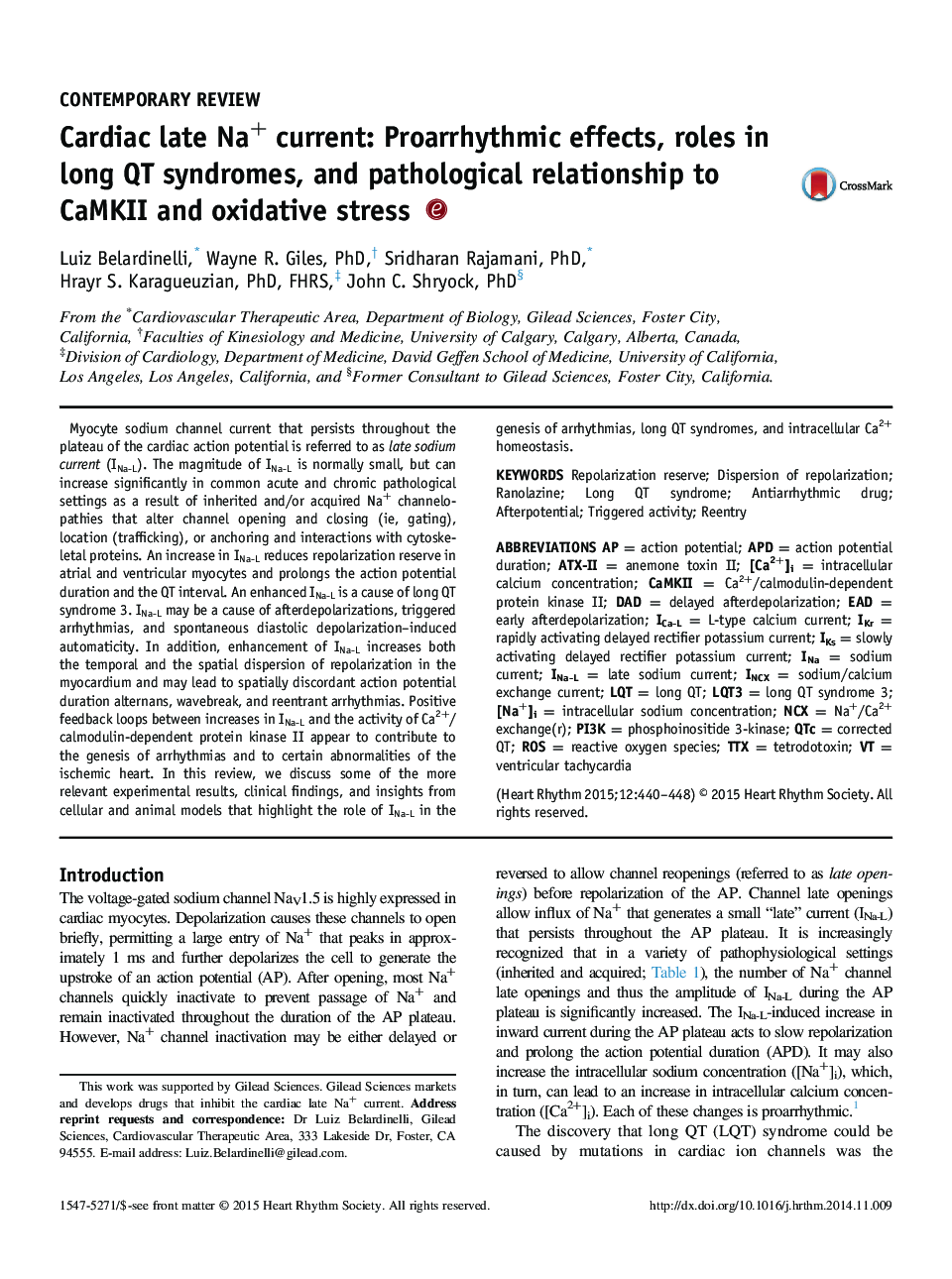| Article ID | Journal | Published Year | Pages | File Type |
|---|---|---|---|---|
| 5960448 | Heart Rhythm | 2015 | 9 Pages |
Abstract
Myocyte sodium channel current that persists throughout the plateau of the cardiac action potential is referred to as late sodium current (INa-L). The magnitude of INa-L is normally small, but can increase significantly in common acute and chronic pathological settings as a result of inherited and/or acquired Na+ channelopathies that alter channel opening and closing (ie, gating), location (trafficking), or anchoring and interactions with cytoskeletal proteins. An increase in INa-L reduces repolarization reserve in atrial and ventricular myocytes and prolongs the action potential duration and the QT interval. An enhanced INa-L is a cause of long QT syndrome 3. INa-L may be a cause of afterdepolarizations, triggered arrhythmias, and spontaneous diastolic depolarization-induced automaticity. In addition, enhancement of INa-L increases both the temporal and the spatial dispersion of repolarization in the myocardium and may lead to spatially discordant action potential duration alternans, wavebreak, and reentrant arrhythmias. Positive feedback loops between increases in INa-L and the activity of Ca2+/calmodulin-dependent protein kinase II appear to contribute to the genesis of arrhythmias and to certain abnormalities of the ischemic heart. In this review, we discuss some of the more relevant experimental results, clinical findings, and insights from cellular and animal models that highlight the role of INa-L in the genesis of arrhythmias, long QT syndromes, and intracellular Ca2+ homeostasis.
Keywords
PI3KICa-LIncXLQTRepolarization reserveATX-IILQT3IKrEADQTcAPDNCXDADIKSTTXCaMKIICa2+/calmodulin-dependent protein kinase IIINaLong QT ROS[Ca2+]i[Na+]ilate sodium currentearly afterdepolarizationReentryslowly activating delayed rectifier potassium currentVentricular tachycardiatetrodotoxinCorrected QTsodium currentrapidly activating delayed rectifier potassium currentL-type calcium currentantiarrhythmic drugranolazineLong QT syndromeIntracellular sodium concentrationintracellular calcium concentrationphosphoinositide 3-kinasetriggered activityAction potential durationaction potentialDispersion of repolarizationdelayed afterdepolarizationReactive oxygen species
Related Topics
Health Sciences
Medicine and Dentistry
Cardiology and Cardiovascular Medicine
Authors
Luiz Belardinelli, Wayne R. PhD, Sridharan PhD, Hrayr S. PhD, FHRS, John C. PhD,
